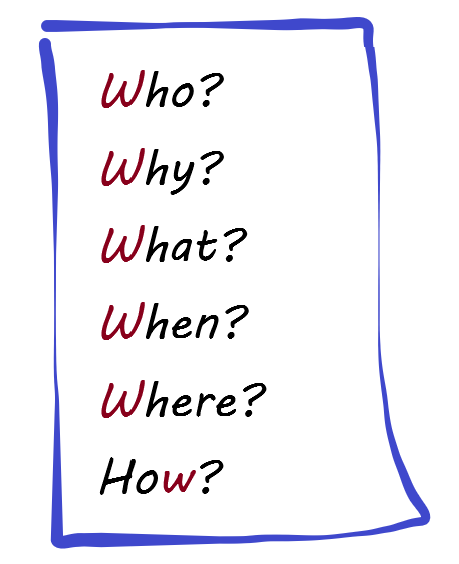# Empathise
# 6 W Method
- Purpose
- To get a fundamental understanding of the issue at hand
- Time required
- 15 to 30 minutes
- Participants
- Design Thinking team
- Level of experience
- experienced

# What is it about?
In the 6 W method you ask basic questions about the situation or scenario. The questions are Who? Why? What? When? Where? How?
# The goal
By using this method, a new situation should become assessable and help the team to achieve a common basic understanding of the situation. This promotes common communication and prevents misunderstandings.
# How to do it?
- Formulate questions using the 6 W.
- Identify the people involved.
- Identify and list relevant actions.
- Identify and list all relevant locations.
- Identify and list critical time factors.
- Identify and list reasons for action.
- Identify and list past events.
- Investigate the connections and interactions between the information obtained.
# When do you need it?
The method is recommended whenever context and circumstances are fairly unknown and little information is available.
# Resources
- Pen and paper
# Advantages
The greatest advantage of this approach is the holistic and structured understanding of the problem. Based on the new findings and information, in-depth insight can be determined.
# Disadvantages
Depending on the situation, the preparing of the various questions can be extensive. This also applies to the post processing, since the answers should be backed up by facts.
# Keep in mind
It should be noted that answers from individual members to the questions may be subjective. In order to form a common basis, it is necessary to communicate within the team.
# See also
| Previous methods | Alternative methods | Following methods |
# Sources
- Curedale: Design Thinking: process and methods manual (opens new window) Design Community College Inc. ISBN: 9780988236240.
- Lewrick: Das Design Thinking Toolbook: Die besten Werkzeuge & Methoden (German) (opens new window) Vahlen. ISBN: 3800657511.